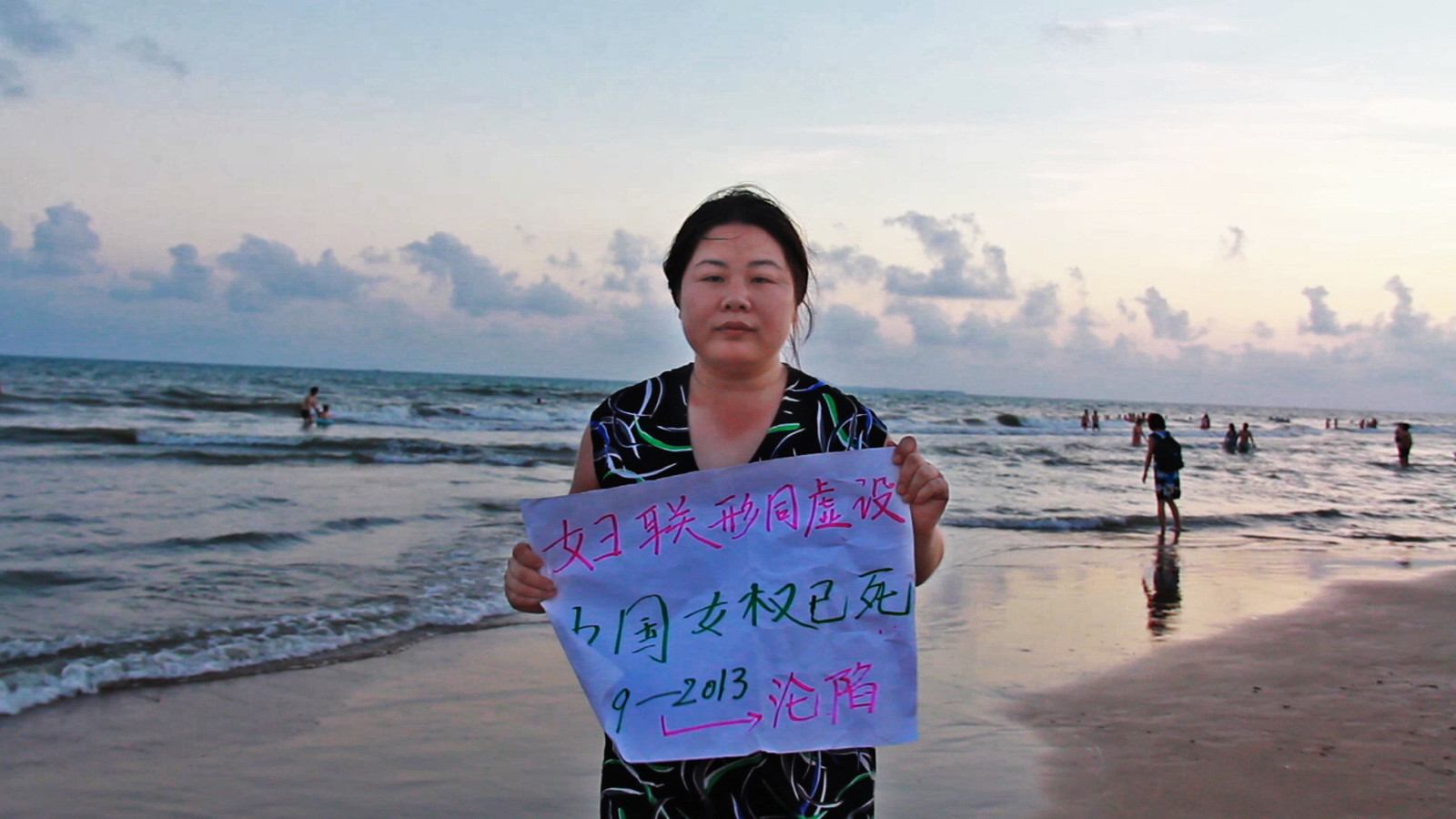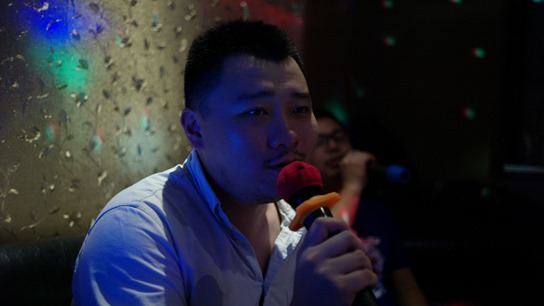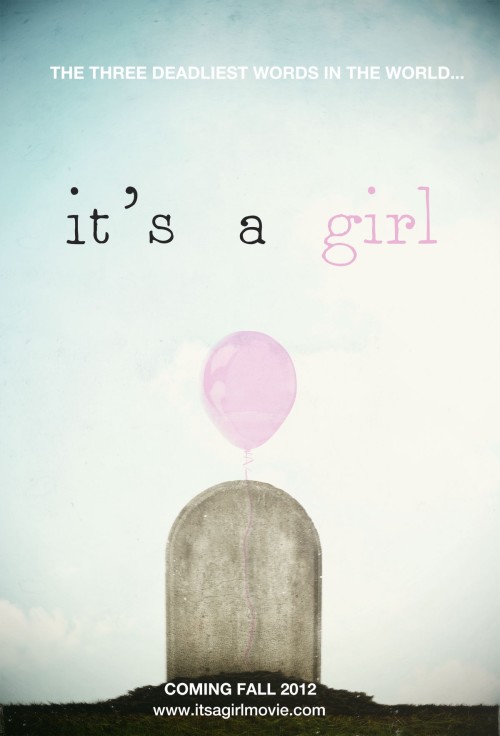Written by Katherine Murray. | Hooligan Sparrow is screening at the Human Rights Watch Film Festival.
[Trigger warning: discussion of rape and sexual assault]
There’s a lot going on in Hooligan Sparrow. The documentary, from director Nanfu Wang, follows Chinese activist Ye Haiyan (aka Hooligan Sparrow) as she protests the lack of prosecution in a child sexual abuse case and suffers retaliatory harassment, surveillance, and imprisonment. The film is full of scenes where strangers who may be plain-clothes police officers threaten to break Wang’s camera, or where the footage shows her running feet, the ground, or the stairs while people shout threatening things in the background. She breathlessly explains to us that she’s had to go into hiding, that she can’t use any form of travel requiring an ID or credit card and that her friends have warned her that the police are asking questions about her.
The issues that Sparrow and her associates (including lawyer Wang Yu, who has been indefinitely detained as of the film’s release), protest are important and well-explained. Sparrow first came to prominence when she began protesting the criminalization of sex work through a stunt where she publically declared that she would prostitute herself for free. In the film, she protests a high-profile sexual abuse case, in which a school principal allegedly abducted several of his female students and forced them to have sex with government officials. After first denying that any sex took place, the defence begins to argue that the girls accepted money in exchange for sex, which would reduce the charge to child prostitution rather than rape, and carry a much lighter sentence. Sparrow and Yu explain that this is a common tactic in Chinese courts – to cover up rape by claiming it was prostitution instead.
Although their cause is just, Sparrow and Wang, who becomes increasingly involved in the action even as she documents it, also carry a certain cloud of ego and drama into their work. It’s the same cloud of ego and drama that follows many full-time activists all over the world, and there have been very few explorations of what it means. It’s entirely possible to both try to make the world a better place and like being the center of attention, but there’s definitely a tension that plays out between those two things.
For example, there’s a scene late in the film where Wang is finally able to interview the father of one of the sexual abuse victims. He reveals that he avoided engaging with them earlier because the only thing he knew about Sparrow was that she’d done a stunt where she said she’d have sex for free. It seems like he doesn’t know or understand what she was trying protest – the protest didn’t draw his attention to the dangers faced by sex workers due to criminalization; it just drew attention to Sparrow. And it actually made him less interested in seeing her as a potential ally, even though they were on the same side.
As Wang narrates the film, after the fact, she also seems to take a certain amount of pleasure in how people were always trying to shut down her film. I don’t doubt at all that she was scared when she was running from violent mobs, or thought she was about to be arrested and detained by the police. But it’s telling that the story, which is supposedly about the persecution that Sparrow is facing, is framed by an incident where someone wrestled Wang’s camera away from her. Definitely scary. Definitely uncool. Kind of throwing the attention on herself rather than either the sexual abuse trial or the activist she’s been profiling.
Hooligan Sparrow is, both intentionally and unintentionally, about the legends that activists build for themselves. It’s about the notoriety that Sparrow receives, the unfair persecution, the harassment, the shunning – being left on the side of the road with her daughter and all their belongings – an incident that later becomes the subject of an art exhibit from Ai Weiwei. But it’s also about why she’s called Hooligan Sparrow. It’s about fame. It’s about glory. It’s about yelling really loud in front of a bunch of other people, and then congratulating yourself and kind of forgetting about it.
It’s not clear from the film whether Sparrow’s protest actually had much impact on the outcome of the trial – it’s not clear whether it made the victims feel supported; it’s not clear whether it changed anyone’s mind. I think it’s important for activists to publicly demonstrate that there are people who don’t agree with what’s going on, even if it doesn’t change anyone’s mind, but the film isn’t focused on whether Sparrow’s work has any impact on anyone else. It also doesn’t delve into the kind of investigative journalism that would uncover what’s happening in China’s rape and sexual assault trials, how systemic government corruption has become, or how the government (allegedly) tries to silence protesters.
On the flip side, the film also doesn’t fully commit to a narrative about Nanfu Wang’s journey as documentarian, even though she becomes a more and more active participant as the story goes on. There’s no strong sense of how this experience changed her, or what the role of gonzo journalism is in helping to bring freedom of speech and expression to China. There’s an interesting subplot in the film, where one of Sparrow’s followers seems to become interested in journalism after meeting Wang and takes up the mantle of “documenting the atrocities” on camera after she’s gone – it’s a subplot I would have like to have seen explored more.
I also wish the film had delved deeper into the subplot about how technology has made it harder for the government to make people disappear. The protesters in Hooligan Sparrow tape messages whenever they fear they’re about to be arrested, explaining that, if they die in custody it will not be because they killed themselves, imploring people to look for them if they go missing, and explaining how their disappearance may be linked to participation in political protests. It’s the same principle that led Ai Weiwei to tweet a photo of himself being arrested, and a form of action that may hold real promise for political change.
Wang’s adrenaline-fueled attempt to get through the summer without losing her camera makes for an engaging story, but it isn’t always clear that what she’s captured on the camera exposes new information or reveals the path to increased human rights in China.
Sparrow’s fellow activist, Wang Yu was arrested along with several other human rights lawyers in 2015 and, as of the film’s release, had been held without trial since. The filmmakers have set up a page with information on Wang Yu’s detention by Chinese authorities as well as suggestions for how to take action. Yu is also one of the women identified in the US government’s #freethe20 campaign.
Katherine Murray is a Toronto-based writer who yells about movies, TV and video games on her blog.









